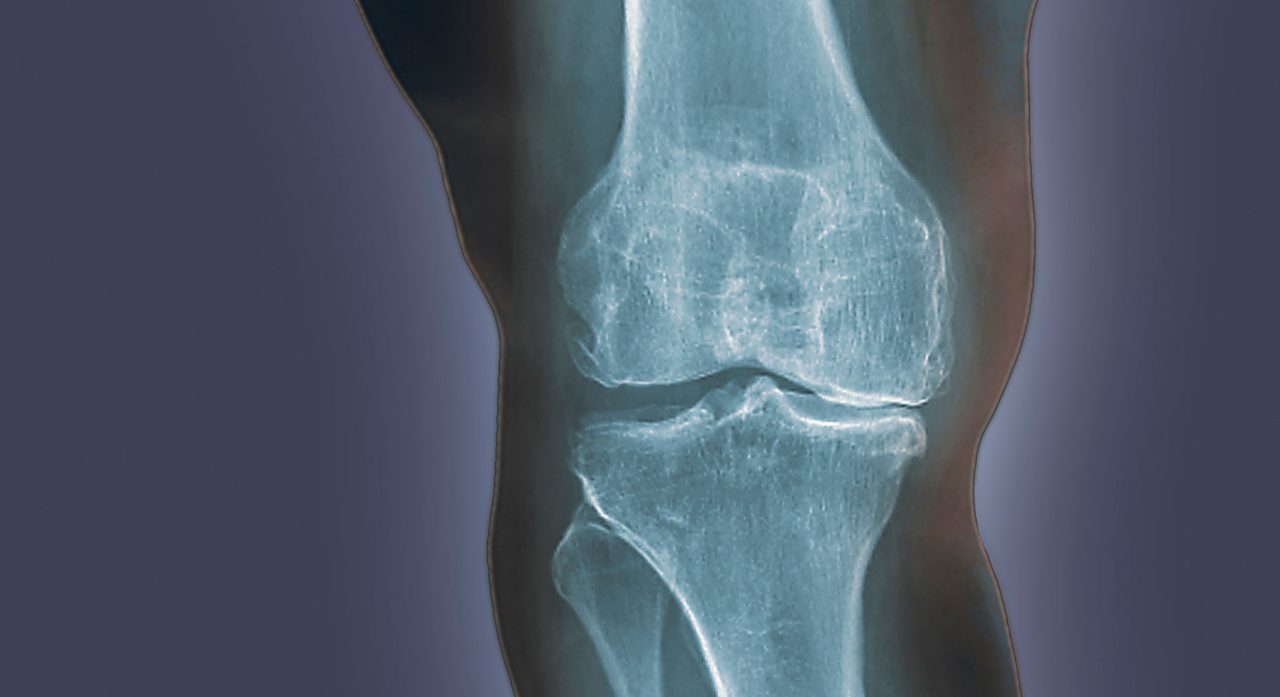What Is Degenerative Joint Disease?

What is degenerative joint disease? Also called osteoarthritis, it’s the most common chronic condition that can affect your joints.
Degenerative joint disease affects approximately 27 million Americans. It can occur in any joint, but mostly it appears in the knees, hips, lower spine, neck, fingers, and your big toe.
What causes degenerative joint disease is when cartilage, which acts as a cushion for your joints, breaks down. When this happens joints can swell and, over time, bone spurs can form. It can be painful and make movement difficult.
YOU MIGHT ALSO LIKE: What Is Inflmmation of the Joints?
The majority of people who get degenerative joint disease are over 65. According to the Arthritis Foundation, one in two senior citizens will develop it in their knees, and one in four by age 85 will have symptoms in their hips.
Degenerative joint disease symptoms
- Sore or stiff joints
- Limited range of movement
- Cracking sounds when a joint bends
- Mild swelling around a joint
- A painful feeling after movement or at night
- Joints that feel tender
- Morning stiffness
- Symptoms worsen during damp, cool, rainy weather
Degenerative joint disease can affect your overall health. If you have intense knee or hip pain and can’t tolerate movement, that sedentary lifestyle can promote obesity, which leads to other health issues, such as diabetes, heart disease, and high blood pressure.
Degenerative joint disease causes
- Arthritis can develop from genetic traits, abnormal growth and development as a child, metabolic abnormalities, and traumatic events.
- Arthritis can develop as the result of a one-time event, such as a shoulder dislocation or a knee arthroscopy surgery, or as the result of repetitive trauma over time, such as constant heavy construction work. However, normal repetitive motion and standing is not sufficient. For example, professional runners are not more likely to develop osteoarthritis. Being overweight often alters the biomechanics of your joint and result in repetitive trauma that leads to osteoarthritis.
If you have degenerative joint disease
If you suspect you have degenerative joint disease, talk to your doctor. He’ll ask you about your family’s medical history, perform a physical exam, and order diagnostic tests. In order to narrow it down for your doctor, you should describe your symptoms, give details on how often and when they occur, where the pain exists, and a list of any medications you are taking.
Your physician will examine your joints and their range of motion. He’s looking for tenderness in your joints, swollen joints, joint pain, and other signs of joint damage. You might have an x-ray or MRI.
Treatment
If the results come back positive and your doctor tells you have the disease, understand that there is no cure. However, several treatments for degenerative joint disease are available. These include exercise and diet. Carrying extra pounds puts unnecessary strain on your joints. Talk to your doctor about an exercise and diet plan.
Medication is also available and can come in pill, syrup, cream, and lotion forms. Some can be injected into the area that’s causing you pain. You can also visit a physical therapist, who will help you with a range-of-motion and flexibility exercises.
If your pain is severe, you can talk to your doctor about getting a scooter, cane, walker, splints, or shoe orthotics to help you get around. Many of these are available at medical supply stores.
Natural remedies are also a possibility. Many people with degenerative joint disease go for weekly massage, acupuncture, and hydrotherapy treatments.
Joint surgery is another option. It’s used to repair or replace damaged joints, especially hips or knees.
Your doctor will discuss all options with you.
Updated:
March 18, 2020
Reviewed By:
Christopher Nystuen, MD, MBA